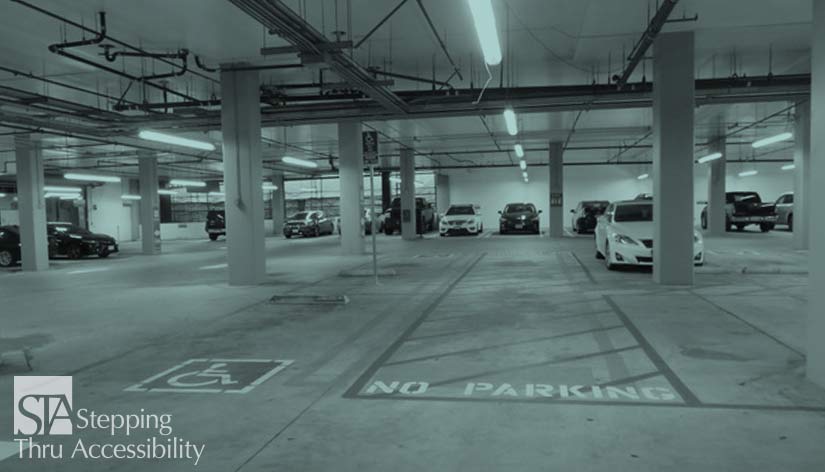Blog
Return to Blog »
Janis Kent, FAIA, Architect, CASp © January. 2022 A question has come up about accessible parking and dispersement within parking structures. Standard accessible and van accessible spaces can be looked at a bit differently within a structure. Under the ADA Standards, the height clearance for van accessible spaces is to be 98″ minimum clear for the full vehicular route to and from the space, which includes both the space and its access aisle. The California Building Code (CBC) requires this height clearance for both standard and van accessible spaces, except in existing parking structures where clear height is an issue. Under both ADA and CBC, van accessible parking spaces are all allowed to be located on the main accessible pedestrian entry level. In a multi-level parking facility, accessible vehicles are also to be located closest to the pedestrian entry to/from the facility. In which case, with the pedestrian entry located on the main entry level, the standard accessible spaces are also to be located on this level as well. Related Ebook: Access and Vehicles But if there is multiple direct access points from the parking to stories in adjacent buildings, then the accessible route to and including the doors connecting each building entry are to comply with the requirements. This would then require dispersal of the standard accessible spaces to these entries, although van accessible can still be located on the main pedestrian level. Now the question comes up is, if I have an elevator in the garage, does this trigger an accessible route to and providing accessible parking on each level? If the parking structure does not have direct access to multi-stories of connecting building(s) other than its main entry level, then the answer is no. One does not need to provide an accessible route within the garage to each level. The reason for this is, a multi-level parking facility, whether below or above grade (or a combination), does not contain human occupiable space which is not actually defined under ADA but is under both IBC and CBC as: OCCUPIABLE SPACE. A room or enclosed space designed for human occupancy in which individuals congregate for amusement, educational or similar purposes or in which occupants are engaged at labor, and which is equipped with means of egress and light and ventilation facilities meeting the requirements of this code. Therefore, this does not trigger requirements for accessible routes to other stories even if elevators are provided. The main level is to be on an accessible route, though. If we are talking about a below grade structure, we would still need an accessible route from the level where the accessible parking is located to the accessible pedestrian entry. I have always found that one answer leads to another question, so here goes. I have seen buildings where the facilities and maintenance groups have offices within the garage. This would be considered an occupiable space since they are engaged at labor, and the question becomes how does this affect accessible parking. Although I have not seen any specific interpretations on this, in my opinion, the level on which the offices are located would also need to be on an accessible route with accessible parking near its office entrance(s), similar to multiple direct access points to a garage. But, this would not affect other levels where the elevator stops. Be aware that your local City or County may have additional requirements that are more restrictive than the State or Federal requirements. Also, this article is an interpretation and opinion of the writer. It is meant as a summary – current original regulations should always be reviewed when making any decisions. © Janis Kent, Architect, FAIA, CASp January, 2022Parking Structures and Access
